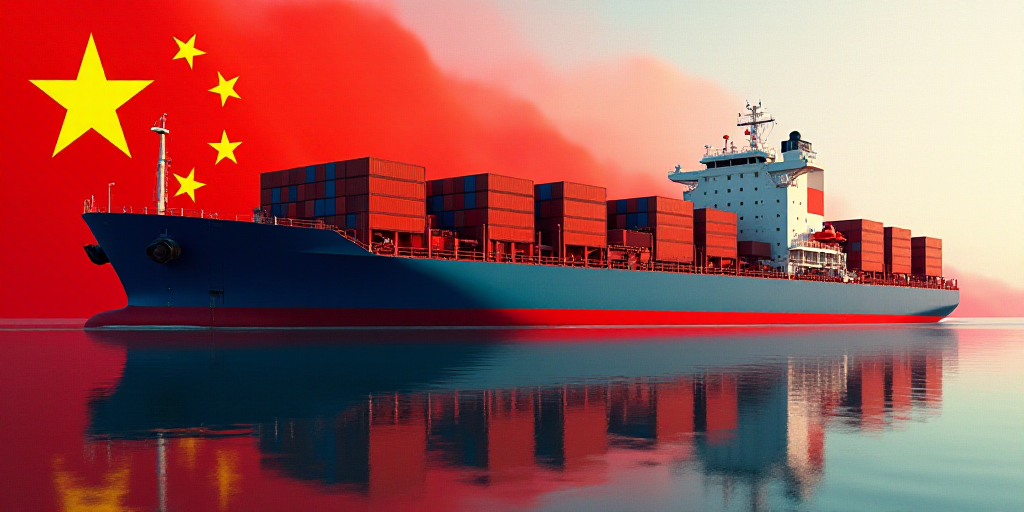Introduction
NEW HAVEN – The trade policy of US President Donald Trump contains an inherent flaw. While it is nearly impossible to predict Trump’s stance on most issues, from taxes to immigration, two key objectives of his trade strategy have gained prominence: establishing a global minimum tariff and imposing special penalties on China. The flaw lies in pursuing both objectives simultaneously.
Trump’s Trade Objectives
Trump has openly declared that a 10% tariff on all trading partners is a bare minimum compensation for the ‘ripoff’ the US has endured for years due to other countries’ unfair trade practices. However, this argument disregards the numerous benefits the US has gained from trade: cheaper products, increased consumer purchasing power, and foreign capital inflows that subsidize US interest rates, contributing to financial wealth creation.
The Proposed Tariff Increase
Trump aims to raise the effective US tariff rate, which averaged 1.8% between 1995 and 2024, to a new floor of 10%. This 8.2 percentage point increase is slightly higher than the 6.3 percentage point rise in effective tariffs between 1929 and 1933 following the Smoot-Hawley Tariff Act of 1930. However, a 10% base tariff would represent a 445% increase from the low-tariff regime of the past three decades, while the Smoot-Hawley Act saw a mere 47% increase in tariffs between 1929 and 1933.
Impact on the US Economy
Currently, goods imports account for 12.2% of the US GDP, nearly triple their share of 4.3% in 1929. Thus, a new 10% base tariff would significantly impact the US economy, not being minimal but rather a substantial burden.
Penalizing China
The second key aspect of Trump’s trade policy is the ‘penalization of China.’ Chinese imports currently face a 30% tariff, triple that of most other countries. This surcharge relates to fentanyl, which could decrease if the US and China reach an agreement on restricting precursor chemicals.
Persistent Trade Accusations
Regardless of fentanyl progress, the Trump administration and Congress firmly believe in imposing special penalties on China for its alleged significant contribution to the US trade deficit. This reflects common accusations of unfair trade practices and growing national security concerns. The basis of many claims in false narries seems to bother Washington policymakers little, as hardline stances towards China have become a rare bipartisan consensus.
Risks of Trump’s Trade Policy
The primary risk to the US economy is increased trade diversion from low-cost China to higher-cost countries. Although this occurred after Trump’s initial 2018-19 China tariffs, further effects could be more damaging now, as the president’s ‘One Big Beautiful Bill’ likely increases federal budget deficits, deepening domestic savings depression. This expands the US multilateral trade deficit, mainly due to pricier imports affected by quintupled effective tariffs.
Decoupling from China
Another complication is that Trump’s trade policy may lead to the US decoupling from China-centered supply chains. The deglobalization resulting from ‘relocating friendly nations’ will likely raise production, assembly, and foreign distribution costs, causing significant price hikes for US consumers. With sluggish growth and rising inflation risks, the threat of stagflation in the US will only intensify.
China’s Predicament
China’s export-oriented economy will be directly affected by tariffs imposed by its primary trading partner. Moreover, China faces the clear possibility of renminbi appreciation, exacerbating its recent deflationary episode.
Limited Consumption Shift
Although the Chinese government will likely emphasize consumption-driven rebalancing in response to these pressures, immediate consumption pattern shifts are unlikely. This leaves China increasingly export-dependent rather than domestically driven, implying greater investment in technology-intensive ‘new drivers of productivity,’ further fueling US protectionism.
Conclusion
None of this bodes well for a slowing global economy already feeling the pressures of trade-induced global slowdown due to tariffs. As China and the US together account for less than 40% of global GDP growth since 2010, the risk of a global recession will only escalate if Trump persists with his unsustainable trade formula.
Key Questions and Answers
- What are Trump’s key trade objectives? Establish a global minimum tariff and impose special penalties on China.
- How would a 10% tariff floor impact the US economy? It would significantly burden the US economy, given that goods imports account for 12.2% of the US GDP.
- What are the risks of penalizing China? It may lead to increased trade diversion from low-cost China to higher-cost countries, causing damaging effects on both the US and Chinese economies.
- How might Trump’s trade policy affect global relations? It could intensify the risk of a global recession, given China and the US’s significant contributions to global GDP growth.






